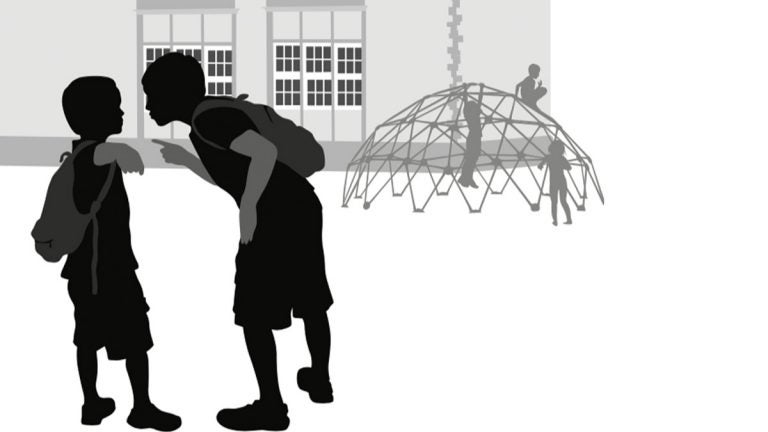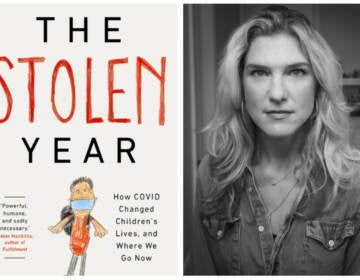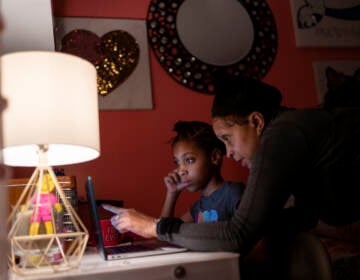Early evidence of a ‘Trump effect’ on bullying in schools
Preliminary study results show that a community's preference for Trump is associated with higher rates of teasing and bullying in Virginia middle schools.

This story first appeared on The Hechinger Report.
—
During and following the 2016 presidential election, there were many media reports describing bullying in schools. But it was hard to know if bullying had actually increased or if parents and teachers and journalists were simply noticing it more. Or perhaps, in our age of Facebook and Twitter, more incidents were coming to our collective attention.
A pair of researchers decided to investigate what happened in middle schools in the political battleground state of Virginia, which voted 49.8% for Hillary Clinton and 44.4% for Donald Trump in 2016. Using surveys that were regularly administered to students throughout the state before and after the election, the researchers tracked how teasing and bullying had changed and mapped that onto election returns. The results: in 2017, both teasing and bullying were significantly higher in schools located in districts that had voted for Donald Trump compared with districts that had voted for Hillary Clinton. Prior to the election, in 2013 and 2015, there had been no divergence in bullying or teasing rates between Republican and Democratic communities.
Specifically, the researchers found that bullying in middle schools was 18 percent higher in GOP districts compared with Democratic districts. Almost 20 percent of middle school students in Republican regions reported being bullied, on average. In Democratic districts, almost 17 percent of the students reported being bullied. (Bullying actually decreased a bit from 2015 to 2017 in schools located in districts that primarily voted for Clinton.) Teasing about race or ethnicity was 9 percent higher in GOP districts than Democratic districts in 2017.
This study was conducted by Dewey Cornell, a national expert in school violence and bullying at the University of Virginia, and Francis Huang, an expert in quantitative research techniques at the University of Missouri. Their paper is still in draft form, undergoing revisions, and the researchers would not share it with me before its publication in a journal. However, the authors presented their findings publicly in April 2018 at the annual meeting of the American Educational Research Association (AERA), where experts in the field of school bullying read a draft and education researchers of all types could hear their presentation, entitled “School Teasing and Bullying After the Presidential Election.” During peer review, authors commonly make changes as they respond to questions from colleagues. That is where Cornell and Huang currently are in the process and the results I am reporting here should be treated as preliminary ones.
“This study is confirming that Trump is actually having an effect on America’s children,” said Jonathan Cohen, past president of the National School Climate Center and an adjunct professor at Teachers College, Columbia University, who read the paper and presented his comments at the April forum. “It’s not surprising. I’ve been hearing this in conversations I’ve been having with superintendents across America, an increase in students being mean and intentionally cruel, especially to immigrants.”
In an interview, Cohen praised the rigor of the study. Cornell developed the school climate survey that Virginia uses and his earlier research with Huang tested the validity and reliability of the survey responses. The surveys were given to middle schoolers in more than 400 schools all around the state in 2013, 2015 and 2017 to assess how safe students felt at school. More than 150,000 seventh and eighth-graders completed the surveys, representing all regions of the state. In the survey, students are asked how much they agree or disagree with statements about bullying and teasing, such as: “Students in this school are teased or put down because of their race or ethnicity” and “Bullying is a problem at this school.” The survey also asks kids if they’ve personally experienced different types of bullying and how many times. (See the accompanying graphic of survey questions.) Cornell and Huang tracked changes in students answers over time and compared those results with how the students’ communities voted in the 2016 presidential election. The researchers accounted for prior levels of teasing and bullying and demographic differences in each community, such as poverty and parental education, in order to compare schools throughout the state with one another.

Cohen says it’s hard to fully understand why school bullying would increase only in communities where a majority of adults had voted for Trump and not Clinton. “It’s not that Trump alone is affecting how people think and feel and act,” said Cohen. “It’s Trump in partnership with the local community. If we have a large segment of the parent community who are connected to racist, anti-immigrant sentiment, then Trump is giving permission to these people to give voice to that sentiment.”
Cornell and Huang’s research in Virginia echoes national reports conducted by the Southern Poverty Law Center, which has been publishing a monthly roundup of hate incidents at schools and conducting less scientific surveys with teachers around the country. In March 2016 and again in December 2016, thousands of teachers reported that anti-immigrant sentiments were increasing in their schools.
“Students would chant, ‘Build the wall,’ or ‘Trump, Trump, Trump,’ and aim those chants at Latinos,” said Maureen Costello, director of the Teaching Tolerance project of the Southern Poverty Law Center. “People described it as testosterone-drenched emboldened bullying behavior. I cannot recall a time when political slogans were used in schools to harass or threaten other people.”
There’s no sign yet that this new politicized bullying has since dissipated. Costello said she conducted a third survey in early 2018 in conjunction with academic researchers. It hasn’t been published yet but she said the anti-immigrant bullying persists.
To be sure, student self-reports on surveys are subject to inaccuracies of memory and interpretation. Cohen points out that the Virginia survey defines bullying quite narrowly between people of unequal power and that the bullying episodes cannot just be once, but repeated. “I would suggest, practically on the ground, a nuance of experiences affect how kids feel,” Cohen said. “If Dewey had used different operational criteria to define bullying, we’d see an even higher percentage [of bullying] in schools.”
What schools can do to address bullying is complex. Stay tuned for a future column on the gap between what the scientific research says works and what schools typically do.
—
Produced by The Hechinger Report, a nonprofit, independent news organization focused on inequality and innovation in education. Sign up for the Hechinger newsletter.
WHYY is your source for fact-based, in-depth journalism and information. As a nonprofit organization, we rely on financial support from readers like you. Please give today.




